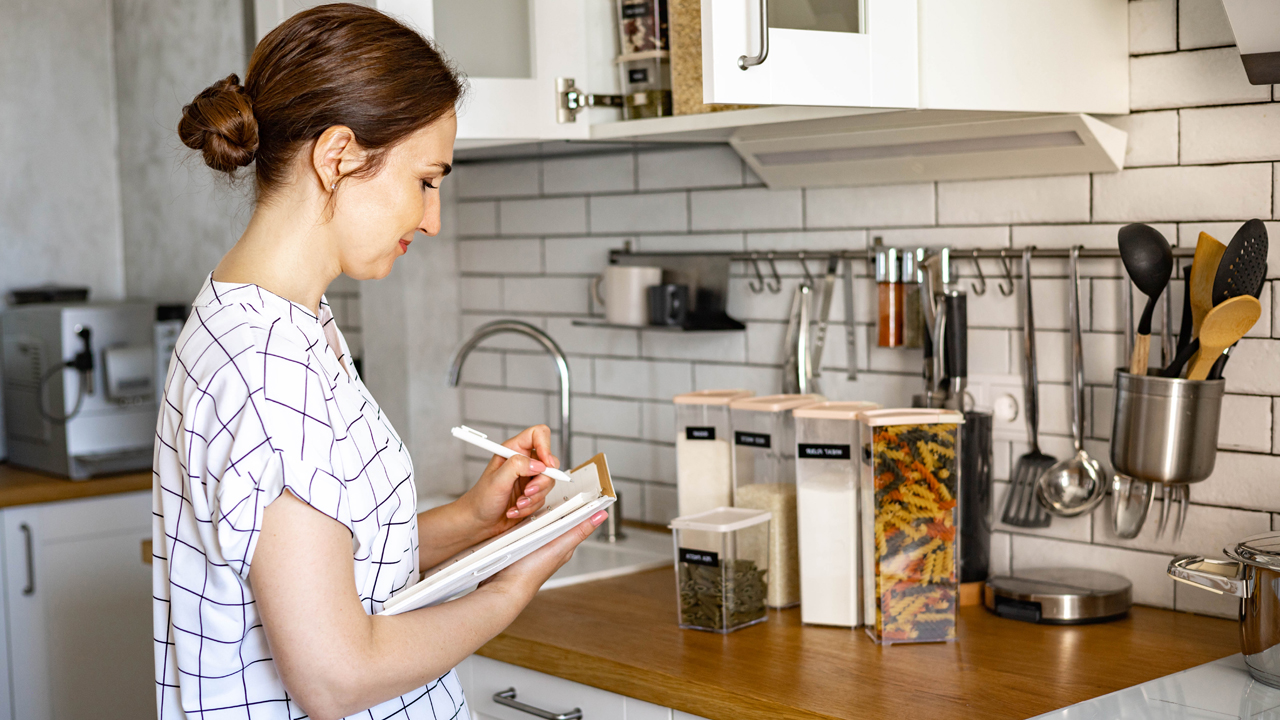Kitchen organisation ideas you’ll wish you knew sooner

The benefits of keeping your kitchen neat
They say everything has its place and this was never more true than in the kitchen. An organised kitchen can save time, prevent food waste, and let’s face it, it’s a lot more attractive and cheaper than renovating. With the help of a few experts, we put together kitchen organisation ideas and helpful tips to organise your kitchen cupboards, clean up your kitchen counters, pantry organisation ideas, and more. The best part? Most of these kitchen organisation tips are fast, easy, and free or inexpensive, to implement.
Purge your drawers and cabinets
Maybe you loved the idea of a juicer but only ever eat toast for breakfast. Or you used to be into baking but now you’ve put your focus into healthy meals. The top kitchen organisation idea is to stop thinking about the stuff, and start thinking about your life and how you want to live, says Laura Cattano, professional organiser and founder of Organisational Design. “If it’s not adding to your life, it’s directly taking away from it because it’s taking space away from something else.”
Group by need, not by item
You might keep your masher and microplane grater by the stove with other long-handled items like cooking spatulas, but that’s not the most convenient setup. “There are three things that happen in the kitchen: prep, cook, and serve,” says Cattano. “The best thing is to zone out your kitchen by those categories.” You might keep your spatulas by the stove, but your potato masher belongs near your countertop and big bowls. Take it a step further by asking exactly when you use each item. For instance, there’s no reason your mugs need to be by your water glasses, but putting them next to the coffee maker will save you from running all over your kitchen in the morning, says Cattano.
Set up a drop zone by the door
“The kitchen is still one of the first places we go when we enter a home,” says Maeve Richmond, founder and coach of organising company Maeve’s Method. “All the stuff of life that comes in the door accumulates in the kitchen.” To keep your meal space from becoming a catchall for your handbag, wallet, and gym bag, Richmond recommends setting up a “drop zone” by your door to set those things as you’re walking in. You might make it a permanent home for your wallet and keys, and a temporary place to drop your workout gear while you’re putting away groceries.
Make a place for mail
Taking just five minutes to go through your mail daily or every other day will keep that pile of papers under control so you don’t lose documents in the shuffle when you actually do need them. “The mail just keeps coming,” says Jodie Watson, founder and president of Supreme Organisation. “Keep trimming it down so you’re not losing items in the mix.” Instead of leaving it by your eating space, designate an area that has a basket for papers, and hang a bulletin board to write messages and reminders, she says.
Adjust the height of your shelves
Don’t let your shelf height define how you use your space. People tend to put cereal on a top shelf because that’s the one with the most space, but it’d be easier to reach on a lower shelf, says Watson. On the other hand, too much space for canned goods and you’ll probably start stacking items into an ugly, unstable pile. If your shelves aren’t already adjustable, buy shelf dividers to split one shelf into two, says Richmond. “Re-spacing the shelves takes away the messiness because things aren’t stacked,” says Richmond.
Store small appliances you don’t use on a daily basis
Feel free to leave appliances you use daily, like a coffee maker or toaster, on the counter. But anything you aren’t using every day should be stored in a cabinet to make more room on the counter. “Nobody likes to have to put the appliance away, but balance that against the precious countertop space,” says Richmond. “There’s the convenience of having it out, but it’s more convenient to be able to chop more vegetables or have a cleaner space.”
Keep your cooking utensils within reach
Store your spatulas, servings spoons, etc next to the stove in an attractive ceramic container or jar. But don’t overstuff it, cautions Cattano. “Not every single cooking utensil needs to be right by the stove,” says Cattano. Leave out the ones you use most often, but hide the rest in a drawer.
Buy only what you need
If you find yourself leaving food out simply because you don’t have room in a cupboard, it might be time to start cutting down. “We want to save money, and it’s good to buy in bulk, but if you don’t have space for it, changing the way you shop might be more helpful,” says Watson. She recommends first going through your pantry to take stock of what you already have. Then head to the supermarket less often so you have a chance to use up what you have before refilling your cabinet.
Organise your oils
Exposure to light can make cooking oils go rancid. If you like having them on the counter, put them in opaque containers and stylise them so they don’t just look like clutter. “Put a tray under them so it looks intentional,” says Cattano.
This article originally appeared on Reader's Digest.
Images: Getty
